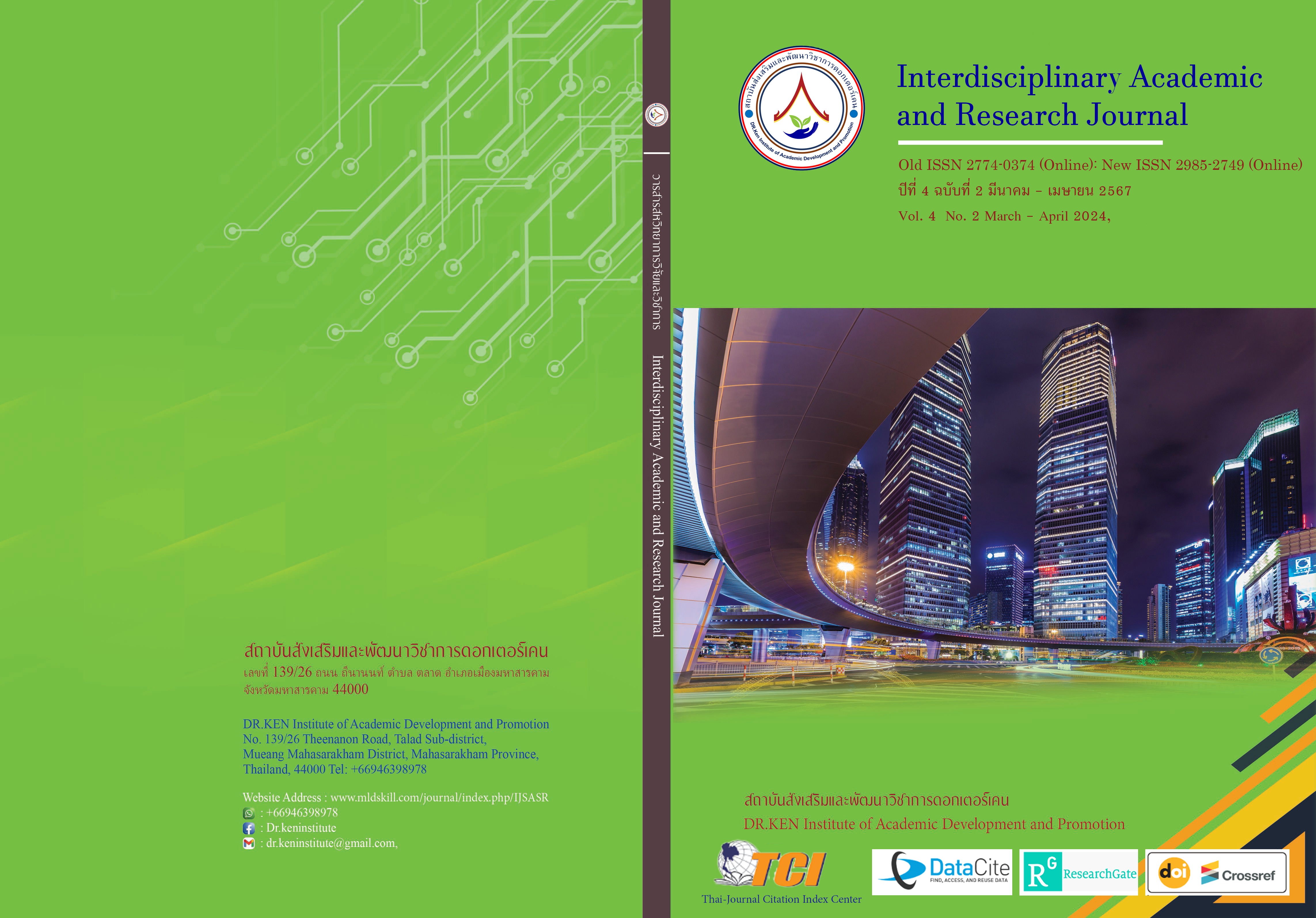Rubber Plantation Management for Increased Productivity
DOI:
https://doi.org/10.60027/iarj.2024.274697Keywords:
Rubber Plantation Management; , Increased Productivity; , Para RubberAbstract
Background and Objectives: This article presents effective strategies and methods to increase rubber production in rubber plantations through the utilization of modern technologies and process improvements. It begins with site preparation and the selection of suitable rubber tree varieties, followed by proper tree maintenance and timely rubber tapping. Additionally, the article introduces innovative technologies capable of enhancing rubber yield and quality efficiently. These approaches aim to establish sustainable rubber plantation management practices that have a positive impact on rubber production in both the current and future rubber industry.
Methodology: This study is a study of related documents and research. Analyze and present according to the educational objectives.
Results: Managing rubber plantations to increase production must rely on knowledge gained from continuous study and research. This knowledge includes selecting rubber species that are appropriate to the soil and weather conditions in each area. Using modern methods of planting and tapping rubber. Soil maintenance and proper use of fertilizers.
Conclusions: Choosing the right species, nourishing the soil, and using fertilizers appropriately. Pest and disease control and tapping rubber in a way that makes the rubber tree last a long time Including government support in education, research, and access to technology are things that can manage rubber plantations.
References
การยางแห่งประเทศไทย ฝ่ายวิจัยและพัฒนาเศรษฐกิจยาง. (2563). สถานการณ์ยางพารา 2563. กรุงเทพฯ: การยางแห่งประเทศไทย ฝ่ายวิจัยและพัฒนาเศรษฐกิจยาง.
ณัฏฐนันท์ โพธิจันทร์. (2559). ศึกษาความต้องการการช่วยเหลือของเกษตรกรชาวสวนยางในความรับผิด ชอบของสำนักงานกองทุนสงเคราะห์การทำสวนยางอำเภอแกลง. จันทบุรี: มหาวิทยาลัยบูรพา.
วิลาวรรณ มณีบุตร. (2559). เกษตรกรชาวสวนยางต่อนโยบายแก้ปัญหาความเดือดร้อน เนื่องจากราคา ยางพาราตกต่ำ กรณีศึกษา: ตำบลเขาค้อ อำเภอปลายพระยา จังหวัดกระบี่. กรุงเทพฯ: มหาวิทยาลัย ธุรกิจบัณฑิตย์.
ศิรประภา สุขสำโรง. (2557). ความสัมพันธ์ของปัจจัยภายในและปัจจัยภายนอกประเทศที่มีผลต่อการส่งออก ยางพาราชนิดยางแผ่นรมควันชั้น 3 ไปประเทศจีน. ปทุมธานี: มหาวิยาลัยเทคโนโลยีราชมงคลธัญบุรี.
ศุภรทิพย์ นิลารักษ์. (2557). คุณภาพชีวิตของเกษตรกรชาวสวนยาง ภายในพื้นที่จังหวัดตราด. จันทบุรี: มหาวิทยาลัยบูรพา.
อริศรา ร่มเย็น. (2560). การพัฒนาการระบบปลูกพืชร่วมยางในภาคใต้ ปัญหาและอุปสรรคในการขับ เคลื่อน. สงขลา: มหาวิทยาลัยสงขลานครินทร์.
อาร์เอโอที. (2566). การยางแห่งประเทศไทย. Retrieved 8 November 2023 from: https://www.raot.co.th/ewt_news.php?nid=3739
Azman, N.A.A., & Jaafar, A.S. (2019). Selection of rubber clones using analytical hierarchy process method. IOP Conference Series: Materials Science and Engineering.
Bunyapraphatsara, N. (2016). Management of rubber plantations. In J. Janick (Ed.), Horticultural Reviews (pp. 253-292). John Wiley & Sons.
Kurniawan, Pebi & Hartati, Wiwi & Qodriah, Sari & Awi, Badawi. (2020). From knowledge sharing to quality performance: The role of absorptive capacity, ambidexterity and innovation capability in the creative industry. Management Science Letters. 10(2), 433-442. Doi: 10.5267/j.msl.2019.8.027.
Pütz, S., & Caliman, J. (2020). Innovations in rubber cultivation: Management and challenges. In S. Pütz & J. Caliman (Eds.), Advances in agronomy (Vol. 161, pp. 1-39). Academic Press.
Shafiq, M.A., Rahman, M.Z. A., & Anura, A.R. (2019). Water use efficiency of rubber Hevea Brasiliense’s) irrigation system in Malaysia. IOP Conference Series: Materials Science and Engineering.
Yin, S., Ding, S., Xu, J., & Fan, X. (2019). Sustainability issues in rubber cultivation: A review of certification schemes and regulations. Sustainability, 11(14), 3901. https://doi.org/10.3390/su11143901
Downloads
Published
How to Cite
Issue
Section
License
Copyright (c) 2024 Interdisciplinary Academic and Research Journal

This work is licensed under a Creative Commons Attribution-NonCommercial-NoDerivatives 4.0 International License.
Copyright on any article in the Interdisciplinary Academic and Research Journal is retained by the author(s) under the under the Creative Commons Attribution-NonCommercial-NoDerivatives 4.0 International License. Permission to use text, content, images, etc. of publication. Any user to read, download, copy, distribute, print, search, or link to the full texts of articles, crawl them for indexing, pass them as data to software, or use them for any other lawful purpose. But do not use it for commercial use or with the intent to benefit any business.
















.png)


